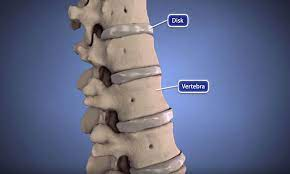The Skeletal System
Draw & label!
How Do Bones Grow?
What Does the Spine Do?
Bones
Bones support the human body. They are the structure on which the skin hangs. Without bones the body would collapse. A person could not walk or run. Bones provide both support and protection for parts of the body.
In the front of the body the bony rib cage covers the chest. Underneath are the heart and lungs. The ribs are bones which protect the heart, lungs and stomach in case of injury.
The skull protects the brain. The bones in the back (or spine) protect the nerves of the spinal column.
The bones store minerals needed by other parts of the body. When the minerals are needed, they will be released into the blood. They also form new red and white blood cells each day. New bone is still made until a person reaches the age of thirty-five. When a person gets much older, the bones start to weaken. The minerals begin to disappear from the bones.
Besides storing minerals and forming blood cells, the bones work with muscles and joints. They allow movement in the body. The place where two bones come together is called a joint. The knee joint is the biggest and strongest joint in the body. Ligaments link bones together at the joints. They are very strong and can stretch. Muscles are attached to bones by tendons. The muscles and tendons together allow the bones move.
The whole bone structure of the body is called the skeleton. The skull protects the brain, eyes, face, jaw and ears. Vertebrae make up the column of bones running down the back. Between each vertebra is a small cushion called a disk. The vertebrae are hollow. Nerves run down through the hollow parts to the whole body.
Knees, hands, feet and legs all have different kinds of bones. Some of these bones can move freely. Some are bound tightly together. Arm bones are connected at the top to the collarbone and shoulder bone. They are connected at the bottom to the hand. Leg bones are attached to the spine at the top by the group of bones called the pelvis. The upper part of the leg is the thigh bone. It forms part of the knee. The lower part of the leg is made up of two bones. They are attached to the foot at the bottom.
Bones are actually living cells. The bones grow and change over time. A person is born with three hundred bones. Some of these bones can join together. By the time a person becomes an adult, he will have only about two hundred and six bones.
In summary, bones are a necessary part of the body. They provide protection and support for vital organs, like the heart, brain and lungs. The bones are strong and can handle heavy weights. They allow a person to walk. They work with muscles to help the body move and stretch. The 206 bones of the body include the ribs, skull, spine, vertebrae, thigh bone, and many more.
Write the questions.
Heart and Circulatory System
What Does the Circulatory System Do?
The circulatory system is made up of blood vessels that carry blood away from and towards the heart.
Arteries carry blood away from the heart. Veins carry blood back to the heart.
What Does the Heart Do?
Your heart is really a muscle. It's located a little to the left of the middle of your chest, and it's about the size of your fist.
How Does the Heart Beat?
Before each beat, your heart fills with blood. Then it contracts (squeezes) to pump the blood along.
What Are the Parts of the Heart?
- The two chambers on top are called the atria.
- The two chambers on the bottom are called the ventricles
What's Circulation? And How Does Blood Circulate?
The movement of blood through the heart and around the body is called circulation. It takes less than 60 seconds to pump blood to every cell in your body.
What Do Arteries Do? And What Do Veins Do?
- The blood vessels that carry blood away from the heart are called arteries.
- The blood vessels that carry blood back to the heart are called veins
What Is Blood and What Does It Do?
Blood is needed to keep us alive. It brings oxygen and nutrients to all the parts of the body so they can keep working. Blood carries carbon dioxide and other waste materials to the lungs, kidneys, and digestive system to be removed from the body. Blood also fights infections, and carries hormones around the body.
Blood is made up of blood cells and plasma. Plasma is a yellowish fluid that has nutrients, proteins, hormones, and waste products.

















Comments
Post a Comment